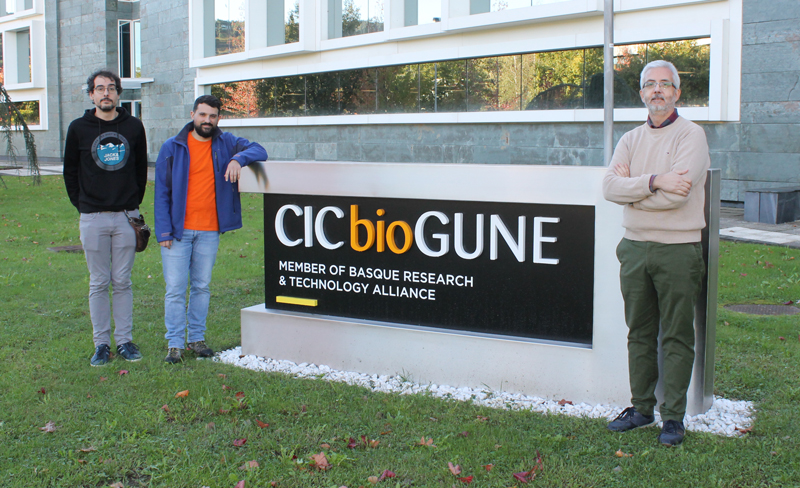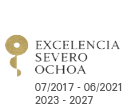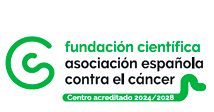
2022/12/15
CIC bioGUNE researchers develop a new transgenic mouse that faithfully reproduces atypical scrapie in sheep
The work provides the scientific community with a new tool for the study of the most frequent prion diseases in humans and the most difficult to get to grips with because their cause is completely unknown and because they are very rare.
The research, led by Joaquín Castilla (CIC bioGUNE) and Enric Vidal (CReSA-IRTA), has been published in the journal Acta Neuropathologica Communications.
A CIC bioGUNE research team has found a solution to the lack of animal models for the study of sporadic prion diseases thanks to the development and characterisation of a new transgenic mouse that consistently reproduces atypical ovine scrapie. Not only does the model develop the disease spontaneously but it is also transmissible in the same animal model and in wild models. Particular mention should also be made of its ability to produce the disease in sheep.
The study, published in the journal Acta Neuropathologica Communications, describes the first laboratory model of atypical sheep scrapie which, because of its similarities to human sporadic prion diseases, is very useful for studying the mechanisms underlying these diseases or for assessing, for example, the effectiveness of potential therapies to combat this type of transmissible spongiform encephalopathy.
“Given the scarcity of animal models for the study of sporadic prion diseases, this study provides the entire scientific community with a suitable animal model to improve understanding of this form of the disease of unknown causes. The research provides a new study tool for those prion diseases in humans which are most frequent and the most difficult to deal with, as their cause is completely unknown and because we are talking of a very rare phenomenon in nature. This model opens up the possibility of understanding the triggers of the disease and of assessing therapies specifically aimed at preventing its onset or slowing its progression”, Joaquín Castilla, Ikerbasque research professor and leader of the CIC bioGUNE prion research group which conducted the study, explains.
This novel animal model will be applied to the study of idiopathic, or sporadic, prion diseases. Unlike the various models developed to study infectious forms of the disease, the study of the onset and development of sporadic diseases is very limited, meaning, amongst other things, that it is still unknown whether there is a trigger for the disease, where it starts, or how long it takes from onset to the occurrence of the initial clinical signs. This animal model could help solve these unknowns. Moreover, given its resemblance to some human sporadic prion diseases, it will also be a useful model for improving diagnosis and testing different therapies under development.
Hasier Eraña, another of the researchers involved in the study, explains further. “The model has been developed by studying in vitro various prion proteins observed in nature and assessing their ability or facility to transform into the pathogenic form. In fact, many test-tube studies have been conducted prior to the development of the animal model. So, finding a prion protein with this greater-than-usual capacity for spontaneous conversion has been like looking for a needle in a haystack”.
International collaboration
The research has been conducted with the collaboration of several research groups. In the main, the study has been promoted and taken forward by the Prion Research Laboratory at CIC bioGUNE, led by Joaquín Castilla; the Spongiform Diseases Unit of the Centre de Reçerca en Sanitat Animal (CReSA-IRTA), led by Enric Vidal; and the Transgenesis Unit of the University of Salamanca, led by Manuel Sánchez-Martín. These three groups have also benefited from the collaboration of researchers from the Centre for Encephalopathies and Emerging Communicable Diseases of the University of Zaragoza, the Animal Health Department of NEIKER, the Istituto Superiore di Sanità in Rome, the Biomedical Research Institute CIMUS in Santiago de Compostela, CISA-INIA in Madrid, INRA in France, Colorado State University and the Faculty of Veterinary Medicine of the Autonomous University of Barcelona.
Prion diseases
Transmissible spongiform encephalopathies, or prion diseases, which are rapidly progressive neurodegenerative diseases affecting humans and other mammals, can develop through three distinct pathways.
Due to its notoriety as the cause of the mad cow epidemic in the 1990s, the best known of these pathways is the infectious route, in which the pathogen (prion) is acquired through ingestion of tissues from animals affected by the disease. This pathogen consists of a protein abundant in neurons (cellular prion protein or PrPC) which, by unknown mechanisms, undergoes a change of three-dimensional structure or conformation and becomes a so-called prion (or PrPSc), exhibiting neurotoxic properties and the ability to convert other PrPsC to its same aberrant structure, spreading the disease throughout the brain and causing neurodegeneration. Although the best known, this infectious form of the disease, in which the prion or PrPSc is acquired from external sources, has become the rarest since the eradication of mad cow disease.
However, genetic and idiopathic forms of these diseases still occur. The former, also known as hereditary, are attributable to mutations in the PrPC gene, leading to its change in structure to PrPSc and thus initiating the pathological process throughout the life of individuals carrying these mutations. The genetic forms of the disease, which include genetic Creutzfeldt-Jakob disease, fatal familial insomnia and Gerstmann-Sträussler-Scheinker syndrome, currently account for approximately 15% of diagnosed prion diseases.
The most common form, accounting for 85% of cases, is sporadic or idiopathic Creutzfeldt-Jakob disease, the cause of which is unknown but is thought to occur through a rare spontaneous structural change of PrPC, occurring in 1 to 2 people per year per million individuals. The most common in humans, it is also the most difficult to study, as its unknown cause prevents the development of animal models of disease that faithfully reproduce it. This type of sporadic disease also exists in animals, the main one being scrapie, which affects sheep. As with the human disease, it also occurs in 1-5 individuals in a million and is therefore not useful for laboratory study.
About CIC bioGUNE
The Center for Cooperative Research in Biosciences (CIC bioGUNE), member of the Basque Research and Technology Alliance (BRTA) and located in the Bizkaia Technology Park, is a biomedical research organization conducting cutting-edge research at the interface between structural, molecular and cell biology, with a particular focus on the study of the molecular bases of disease, for use in the development of new diagnostic methods and advanced therapies.
About Ikerbasque
Ikerbasque - the Basque Foundation for Science - was created as the result of an initiative of the Basque Government Department of Education to further strengthen its commitment to scientific research by attracting, bringing to the Basque Country and subsequently consolidating excellent researchers from all over the world. Today, Ikerbasque is a consolidated organization with 290 researchers working in all fields of knowledge.
About the BRTA
The BRTA is an alliance made up of 4 collaborative research centers (CIC bioGUNE, CIC nanoGUNE, CIC biomaGUNE and CIC energiGUNE) and 12 technology centers (Azterlan, Azti, Ceit, Cidetec, Gaiker, Ideko, Ikerlan, Lortek, Neiker, Tecnalia, Tekniker and Vicometch), with the aim of developing advanced technological solutions for Basque companies.
With the support of the Basque Government, the SPRI Group and the Provincial Councils of the three regional provinces, the alliance seeks to promote collaboration among its centers, to strengthen the conditions to generate and transfer knowledge to companies, contributing to their competitiveness, and to spread Basque scientific and technological capacity outside of the Basque Country.
BRTA has a staff of 3,500 professionals, accounts for 22% of the Basque Country’s R&D investment, generates an annual turnover of over EUR 300 million and files 100 European and international patents per year.
CIC bioGUNE, member of the Basque Research & Technology Alliance, BRTA
See a large version of the first picture





